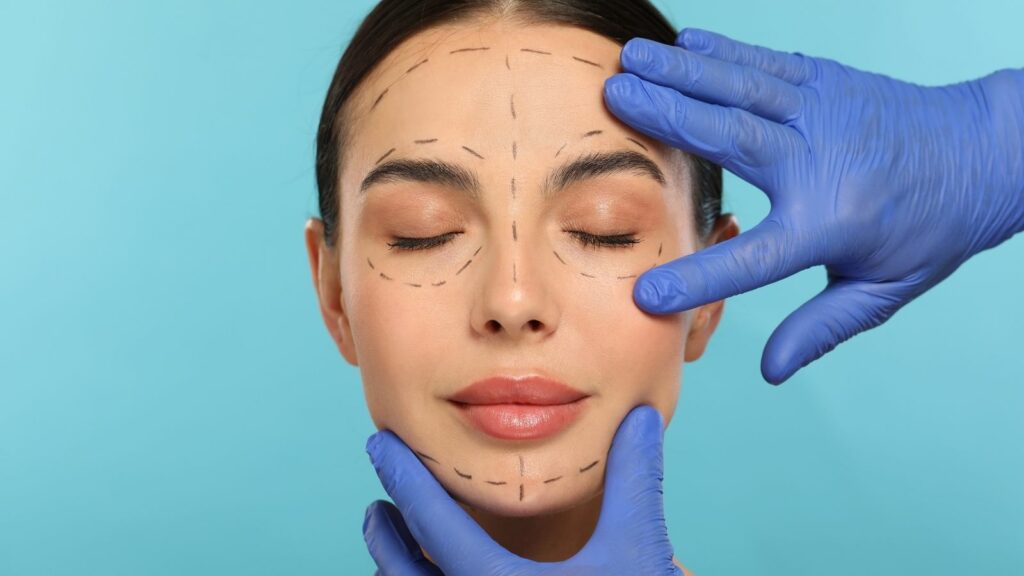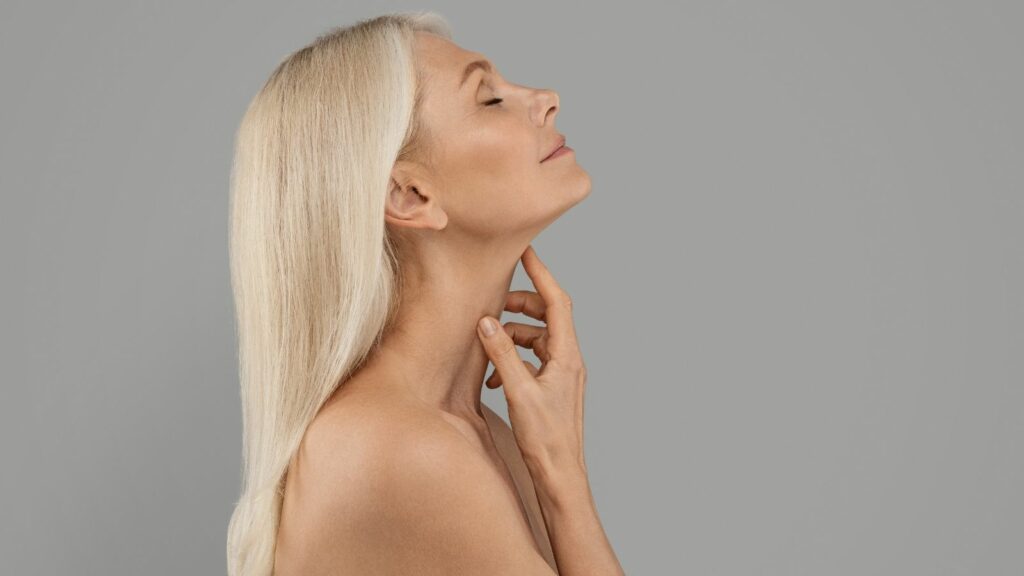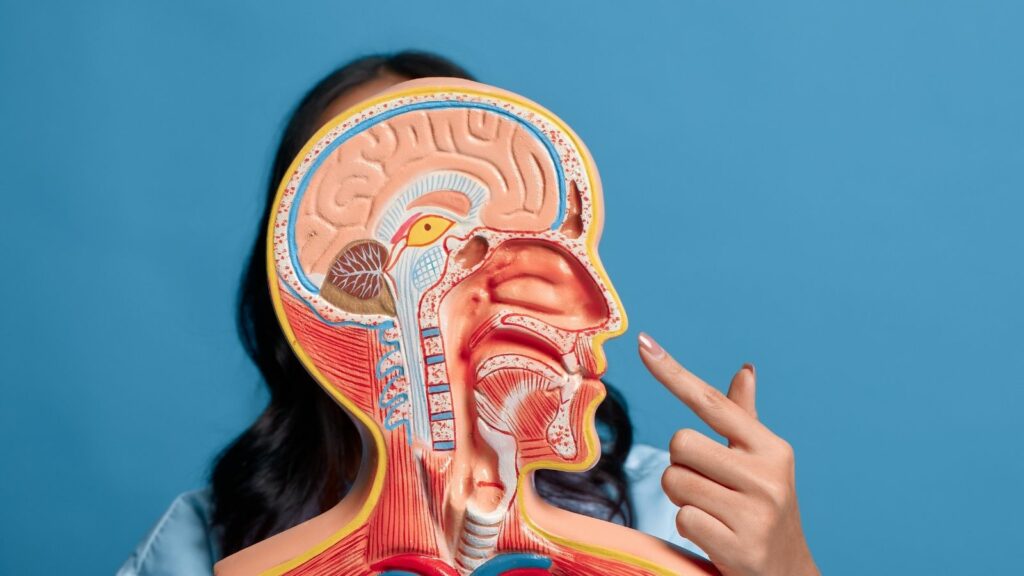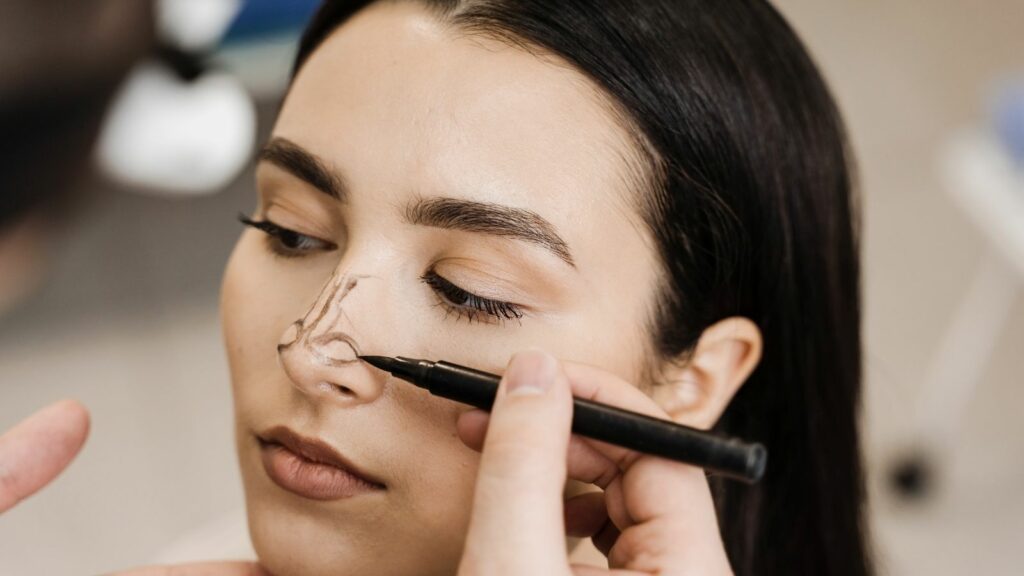Rhinoplasty is a nasal aesthetic surgery that reshapes the external structure of the nose to achieve a harmonious appearance with facial aesthetics. Septoplasty, on the other hand, is a functional surgery that corrects deviations in the nasal septum—known as septum deviation—by resolving breathing problems such as chronic nasal obstruction. In today’s modern surgical approach, these two procedures are not separated; aesthetic and functional goals are combined under a single operation called septorhinoplasty, addressing both the health and the appearance of the nose as a whole. This integrated approach meets aesthetic expectations while ensuring a healthy breathing function.
What do the terms septoplasty, rhinoplasty, and septorhinoplasty mean?
Although these terms are often used interchangeably, each focuses on a specific area. Understanding the differences between them helps you better identify the treatment you need.
Septoplasty is a surgery entirely related to the internal structure of the nose, aimed at improving breathing function. It corrects the deviations (deviation) of the septum, the wall in the middle of the nose. If you have a significant septal deviation, you may experience complaints such as:
- Persistent nasal congestion
- Breathing through the mouth
- Snoring
- Sleep apnea
- Recurrent sinusitis attacks
- Frequent nosebleeds
Rhinoplasty is an aesthetic surgery primarily focused on reshaping the external appearance of the nose. It aims to achieve a more natural, balanced, and harmonious nose that fits your face. The aesthetic changes targeted with rhinoplasty may include:
- Removing the hump on the nasal bridge
- Narrowing wide nasal bones
- Refining a thick or bulbous nasal tip
- Raising a droopy nasal tip
- Reducing wide nostrils
- Correcting deformities caused by trauma
- Eliminating nasal asymmetries
Septorhinoplasty is the most ideal and comprehensive approach. It treats both breathing problems caused by septal deviation and aesthetic concerns regarding the external appearance of the nose simultaneously in a single operation. This is the standard modern approach because the strong connection between internal and external nasal structures is now well understood.
Can nasal aesthetics and breathing function be considered separately?
Absolutely not. This is one of the fundamental principles of modern nasal surgery: form and function are inseparable. You can think of your nose as a house. The septum forms the foundation and main supporting column of that house. The external nasal framework—bone and cartilage—is the walls and roof built on this foundation.
No matter how much you try to straighten the walls of a house with a crooked foundation, it will never stand properly. Similarly, trying to correct only the external crooked appearance of the nose without treating the internal septal deviation means not addressing the root of the problem, and the result is often not permanent. The deformity may eventually recur.
The opposite is also true. Focusing only on aesthetics while ignoring function can lead to much more serious issues. If you weaken the supporting structures and walls of a solid house for the sake of cosmetic concerns, the house will eventually collapse. In some past aggressive rhinoplasty techniques, surgeons removed an excessive amount of supporting tissue to make the nose smaller. Although this provided a short-term aesthetic result, it caused serious long-term problems. Possible long-term consequences of an aesthetic operation that ignores function include:
- New or worsening nasal obstruction
- Collapse of the nasal middle vault (“inverted V” deformity)
- Collapse of the nasal sidewalls (valve narrowing)
- Drooping or deformity of the nasal tip
- An artificial, “operated” nasal appearance
Therefore, even when planning a purely aesthetic nasal surgery, the septum must be evaluated, even if the patient has no breathing complaints. A straight and healthy septum is essential for both a strong airway and a long-lasting, stable aesthetic outcome.
What does the preoperative preparation process include?
A successful surgery begins not in the operating room but in the examination room. A meticulous preparation process enables the surgeon to create the most accurate plan and helps the patient form realistic expectations.
This process begins with listening to you. It is very important to understand your complaints, what bothers you about your nose, and the kind of result you envision. During this consultation, certain topics are emphasized:
- How long have you had nasal obstruction?
- Is it one-sided or both-sided?
- How is your sleep? Do you snore or experience breathing pauses?
- Do you frequently experience sinus infections?
- Have you ever had trauma to your nose?
- Do you have allergies?
A detailed physical examination is then performed. Both the external structure of the nose (skin quality, bone and cartilage structure, facial proportions) and the internal structure using an endoscope (septum, turbinates, sinus drainage pathways) are evaluated. This examination reveals whether the obstruction is due only to septal deviation or if there is another problem such as turbinate hypertrophy.
Sometimes, a short course of medical treatment may be tried to determine whether the source of the complaints is an anatomical problem or a medical condition such as allergic rhinitis. For example, if your symptoms do not improve after using a nasal spray for a few weeks, this suggests the issue is likely structural and may require surgery.
Why is 3D planning and simulation so important?
Technology has radically transformed modern rhinoplasty practice. In the past, surgical planning relied on two-dimensional photographs and the surgeon’s experience-based estimations. Today, this approach has evolved from “correcting a deformity” to “designing a result.” At the heart of this process lies 3D Virtual Surgical Planning (VSP).
During the examination, special 3D cameras are used to create a digital copy of your face—a “digital twin.” This is much more than a photograph; it is an accurate model on which millimetric measurements can be made and examined from any angle. Planned surgical changes can be simulated on this model, allowing you to see the potential outcome in three dimensions before the operation.
One of the greatest advantages of this technology is the perfect communication bridge it creates between the patient and the surgeon. You can express what you want more clearly, and you can better understand what is possible and appropriate for you. It helps ensure realistic expectations and eliminates postoperative surprises.
But the benefits of 3D planning do not end there. This digital plan can be turned into physical form using 3D printing technology. This allows personalized tools to be created for use during surgery:
- Anatomical reference models
- Customized surgical guides
- Personalized postoperative splints
What are the differences between open and closed rhinoplasty techniques?
There are two main surgical approaches in rhinoplasty: the open technique and the closed technique. Neither has absolute superiority over the other. Each has advantages and disadvantages, and choosing the right technique depends on the patient’s nasal structure, the complexity of the required corrections, and the surgeon’s experience.
Closed rhinoplasty is performed with all incisions made inside the nostrils. There is no visible scarring. Its biggest advantages are being less invasive, generally shorter operative time, and the fact that swelling—especially at the nasal tip—tends to be milder, resulting in slightly faster recovery. However, the surgeon’s field of view is limited, similar to working through a keyhole. Therefore, the closed technique is typically more suitable for patients with simpler deformities. Ideal cases for closed rhinoplasty include:
- Mild to moderate hump removal
- Cases not requiring major nasal tip modification
- Noses without significant asymmetry
Open rhinoplasty involves making a small incision on the columella—the strip of skin between the nostrils—in addition to the internal incisions. This incision is usually in an inverted “V” shape and becomes nearly invisible once healed. Through this small incision, the skin of the nose is lifted, providing complete visibility of the underlying bone and cartilage framework—similar to opening a car’s hood to see the entire engine. This unmatched visibility gives the surgeon exceptional control and precision. Open technique is preferred especially in:
- Severely crooked noses
- Significant nasal tip deformities
- Revision (secondary) surgery patients
- Correction of major asymmetries
- Complex cases requiring cartilage grafting
What is the main difference between structural and preservation rhinoplasty philosophies?
Beyond the surgical approach (open or closed), the true revolution in rhinoplasty is occurring at the philosophical level. There is a shift from the traditional “structural” approach to the modern “preservation” philosophy.
Structural rhinoplasty has long been considered the gold standard. Its basic principle can be summarized as “remove, reshape, and reconstruct.” In this approach, the bone and cartilage framework of the nose is separated, excess parts are removed (e.g., the dorsal hump), and the nose is reconstructed and supported using cartilage grafts, often taken from other parts of the body. This is a powerful and reliable method, especially for correcting major deformities and performing revision surgery. However, it may sometimes sacrifice too much of the nose’s natural structure and lead to an “operated look” over time.
Preservation rhinoplasty is a newer and revolutionary philosophy. As the name suggests, its main goal is to preserve the natural anatomy of the nose as much as possible. Instead of “removing,” it focuses on “repositioning and reshaping.” The core components of this philosophy include:
- Soft tissue preservation: The nasal skin is elevated through a special plane that preserves the underlying muscle and ligament structures.
- Dorsal preservation: The nasal bridge hump is not shaved or broken. Instead, a small amount of bone and cartilage is removed from underneath, and the entire nasal roof is lowered as a single unit (Push Down/Let Down technique). This preserves the natural, smooth lines of the dorsum.
- Cartilage preservation: Nasal tip cartilages are not cut and removed; they are reshaped using sutures.
With proper patient selection, preservation rhinoplasty offers significant advantages such as more natural results, faster recovery, and protection of the nose’s natural support mechanisms. Today, many surgeons adopt hybrid techniques that combine the best aspects of both philosophies.
What is Piezo (ultrasonic) surgery and what are its advantages?
Traditionally, tools such as surgical hammers and chisels (osteotomes) were used to shape the nasal bones during rhinoplasty. Although effective, these tools could cause unwanted fractures and significant trauma to surrounding soft tissues (vessels, nerves, mucosa). This meant more swelling, bruising, and pain after surgery.
Piezo (Ultrasonic) Surgery is a groundbreaking technology in this field. The system works using the power of sound waves. The tip of the device vibrates thousands of times per second, precisely cutting or shaping only hard tissue such as bone. The most remarkable feature of this technology is that while it acts on the bone, it does not damage the surrounding soft tissues like vessels, nerves, or mucosa. It is like a sculptor’s tool that can carve stone without touching the fabric around it.
Piezo surgery has numerous scientifically proven advantages over traditional methods, directly improving patient comfort and recovery. Its main benefits include:
- Significantly less postoperative swelling
- Almost no bruising under the eyes
- Noticeably less pain
- Protection of soft tissues
- Elimination of unwanted fracture risk
- Millimetric precision in shaping bones
- Smoother and more aesthetic nasal contours
- Faster return to social life
This technology has become an indispensable part of modern nasal surgery, making the delicate bone maneuvers of preservation rhinoplasty much safer and more predictable.
How does the postoperative healing process work?
No matter how successful the surgery is, the perfection of the result depends on proper postoperative care. This process requires patience, and it may take up to a year for your nose to reach its final shape.
The first week is the most important period for rest and swelling control. Typically, plastic splints and tapes on the nose are removed between days 5 and 7. At this stage, your nose will still be quite swollen, which is completely normal. Most of the swelling resolves during the first month, but the remaining edema may take months to fully subside as the skin adapts to the new framework. Important points to consider during recovery include:
- Sleeping with your head elevated for the first few days
- Applying cold compresses around the eyes
- Protecting your nose from trauma
- Avoiding glasses for at least one month
- Avoiding heavy sports and activities for several weeks
- Regularly using the nasal care routines and sprays provided by your doctor
Is nasal packing still necessary?
One of the biggest concerns for many patients is the nasal packing placed after surgery, which used to be very painful to remove. In modern rhinoplasty, routine use of nasal packing has been almost completely abandoned.
Scientific studies have shown that nasal packs do not significantly reduce the risk of complications such as bleeding or hematoma (blood accumulation). In fact, they may increase discomfort and even raise the risk of infection. Today, far more comfortable and effective methods are used instead. Absorbable “quilting” sutures are placed to approximate the septal mucosa. These sutures prevent bleeding without the pressure and pain caused by packing. In some cases, thin, soft silicone splints with breathing channels may be placed on either side of the septum. These allow patients to continue breathing through the nose and can be removed easily and painlessly after a few days.
How common are the risks and the need for revision in rhinoplasty?
Like any surgical procedure, rhinoplasty has potential risks. However, with modern techniques and experienced surgeons, these risks are quite low. Early complications may include infection, bleeding, or anesthesia-related risks. Long-term issues may involve both functional and aesthetic dissatisfaction. Possible long-term issues include:
- Persistent breathing problems
- Nasal asymmetry
- Irregularities on the nasal bridge
- Excessive elevation or drooping of the nasal tip
In such cases, revision surgery may be necessary. Large-scale scientific studies indicate that the revision rate for first-time rhinoplasty patients is around 3–5%. However, for patients who have undergone one or more previous nasal surgeries, this rate may increase to 10–15%. This highlights the importance of the first surgery and how critical surgeon selection is.
How is the success of a nose surgery measured?
In modern medicine, success is not measured solely by the surgeon’s perspective but primarily by the patient’s own evaluation. The most objective way to determine whether the surgery was successful is by assessing the patient’s quality of life. For this purpose, internationally validated standardized patient questionnaires (PROMs) are used. These questionnaires scientifically measure both aesthetic satisfaction and functional improvement. Some of the questionnaires used in postoperative evaluation include:
- NOSE (Nasal Obstruction Symptom Evaluation): Rates nasal obstruction symptoms only.
- ROE (Rhinoplasty Outcome Evaluation): Measures satisfaction with the aesthetic appearance of the nose.
- SCHNOS (Standardized Cosmesis and Health Nasal Outcomes Survey): Combines both functional and aesthetic assessment in a single questionnaire.
The success of a surgery is determined by a patient showing a significant improvement compared to the preoperative period in these questionnaires—meaning being happier with their appearance in the mirror and breathing more comfortably. This patient-centered approach forms the essence of modern septorhinoplasty.













